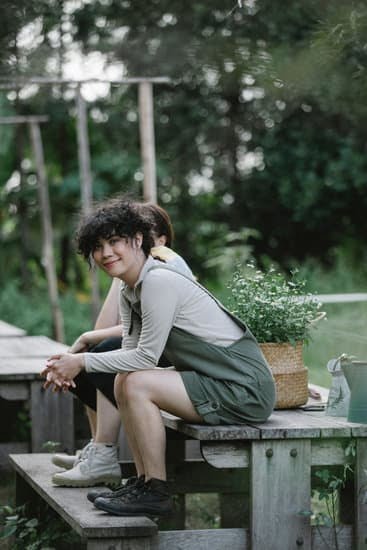Are you looking for new and exciting gardening project ideas to enhance your outdoor space? Whether you’re a beginner or seasoned gardener, there are countless ways to get creative with your gardening projects. From container gardening and DIY garden dcor to sustainable practices and community involvement, the possibilities are endless. In this article, we’ll explore a variety of gardening project ideas that will inspire you to bring your garden dreams to life.
Gardening is not only a way to beautify your outdoor space, but it can also be a therapeutic and rewarding hobby. If you’re limited on space or resources, container gardening is a great way to start small and still make a big impact. From herb and vegetable garden plans for beginners to creative flower bed designs, there’s something for everyone to explore in the world of gardening.
For those looking to make a positive impact on the environment, sustainable gardening projects such as composting, rain barrels, and eco-friendly practices are worth considering. Additionally, getting involved in community garden projects can provide an opportunity to connect with others who share the same passion for gardening while making a difference in your local area.
Whether you have a small yard or plenty of space to work with, there are endless opportunities for bringing your gardening project ideas to life.
Container Gardening
Choosing the Right Containers
When starting a container garden, it’s important to select the right containers for your plants. Consider the size of the plant at maturity and choose a container that allows for adequate root growth. Additionally, ensure that your containers have drainage holes to prevent waterlogging.
Selecting the Perfect Plants
The key to successful container gardening is selecting the right plants for your space and climate. Consider factors such as sunlight exposure, water requirements, and temperature tolerance when choosing plants for your containers. For beginners, low-maintenance options like succulents and herbs are excellent choices to start with.
Caring for Your Container Garden
Proper care is essential for the success of your container garden. This includes regular watering, fertilizing as needed, and monitoring for pests or diseases. Be sure to also consider the appropriate soil mix for your chosen plants and provide proper air circulation around your containers.
By following these tips on how to start small with container gardening project ideas, you’ll be well on your way to creating a beautiful and bountiful garden in even the smallest spaces.
DIY Garden Décor and Landscaping Ideas
Landscaping your outdoor space can be a fulfilling and creative DIY project that adds beauty and personality to your home. Whether you have a large backyard or a small patio, there are various ways to enhance the aesthetic appeal of your outdoor space. Here are some gardening project ideas for DIY garden dcor and landscaping:
- Planting colorful flowers in flower beds or hanging baskets
- Creating a stone pathway or adding stepping stones
- Installing outdoor lighting such as solar-powered lanterns or string lights
- Building a pergola or trellis for climbing plants
- Adding a water feature such as a small pond, fountain, or birdbath
In addition to these ideas, you can also personalize your outdoor space with unique dcor elements such as garden sculptures, wind chimes, and decorative pots. The key is to think creatively and incorporate elements that reflect your personal style and preferences.
When it comes to landscaping, consider incorporating sustainable practices into your gardening projects. For example, using native plants in your garden not only contributes to the local ecosystem but also requires less maintenance. Additionally, creating habitat areas for wildlife such as bird feeders and butterfly gardens can add an ecological element to your landscaping projects.
Ultimately, DIY garden dcor and landscaping ideas allow you to transform your outdoor space into a beautiful and inviting environment while expressing your creativity and love for gardening. Whether you’re working on a small budget or have ample resources at your disposal, there are endless possibilities for enhancing the beauty of your outdoor area through DIY projects.
Seasonal Gardening Projects
When it comes to gardening, each season offers unique opportunities and challenges. With the right approach, you can make the most of every season by planning seasonal gardening projects that will keep your garden thriving year-round.
Here are some ideas for seasonal gardening projects:
- Spring: As the weather warms up, it’s time to start planting annuals, perennials, and vegetables. Consider creating a colorful spring bulb garden or building raised beds for your vegetable garden.
- Summer: With the summer heat in full swing, it’s essential to keep your garden well-watered and cared for. Consider adding a drip irrigation system or installing a rain barrel to collect water for your garden.
- Fall: Fall is the perfect time for planting trees, shrubs, and cool-season vegetables. You can also create a fall-themed garden with pumpkins, mums, and ornamental kale.
- Winter: While many plants go dormant in winter, there are still some gardening tasks you can tackle. Consider starting an indoor herb garden or planning out your spring garden during the winter months.
By planning seasonal gardening projects throughout the year, you can ensure that your garden stays beautiful and productive no matter the season. Whether it’s planting new flowers in the spring or harvesting vegetables in the fall, there’s always something to do in the garden throughout the year.
Herb and Vegetable Garden Plans for Beginners
For those new to gardening, starting a herb and vegetable garden is a great way to dip your toes into the world of gardening. Not only will you be able to enjoy the satisfaction of growing your own food, but you’ll also have access to fresh, organic produce right in your backyard. Here are some tips for beginners looking to start their own herb and vegetable garden:
Choosing the Right Location
The first step in starting your herb and vegetable garden is finding the right location. Look for an area in your yard that receives plenty of sunlight, as most herbs and vegetables thrive in sunny conditions. You’ll also want to make sure that the location has good drainage to prevent waterlogged soil, which can lead to root rot.
Selecting the Right Plants
When it comes to choosing which herbs and vegetables to grow, consider what you enjoy eating and cooking with. Some popular choices for beginners include tomatoes, peppers, basil, mint, and parsley. It’s also important to consider the climate in your area and choose plants that are well-suited for your region.
Caring for Your Garden
Once you’ve planted your herbs and vegetables, it’s important to provide them with the proper care. This includes regular watering, fertilizing as needed, and keeping an eye out for pests or diseases. Taking care of your garden requires regular attention and maintenance, but the rewards of harvesting fresh produce make it all worth it.
Starting a herb and vegetable garden as a beginner can be both rewarding and educational. With these gardening project ideas, you’ll be on your way to growing your own delicious and healthy produce in no time.
Creative Flower Bed Designs and Planting Ideas
When it comes to gardening project ideas, creating a beautiful flower bed can be a rewarding and fulfilling endeavor. Whether you have a small backyard or a spacious garden, there are countless creative designs and planting ideas to elevate the aesthetic appeal of your outdoor space.
One popular option is to create a layered flower bed, with tall flowers at the back and shorter ones in the front. This design not only adds depth and dimension to your garden but also allows for optimal sunlight exposure for all of your plants. Additionally, incorporating a mix of annuals and perennials will ensure that your flower bed remains vibrant throughout the growing season.
Another creative idea for flower bed designs is to incorporate different textures and colors. Mixing various types of flowers, foliage, and even ornamental grasses can add visual interest and diversity to your garden. Consider using contrasting colors or complementary hues to create a visually appealing display that will truly stand out.
In terms of planting ideas, consider incorporating native plants or flowers that are well-suited to your specific climate and soil conditions. This will not only make maintenance easier but also contribute to the overall health of your garden ecosystem. Additionally, mixing in some flowering shrubs or ornamental trees can provide added structure and height to your flower bed design.
| Flower Bed Design Tips | Planting Ideas |
|---|---|
| Create layers for depth | Incorporate native plants |
| Mix textures and colors | Add flowering shrubs for structure |
Vertical Gardening
One of the most popular gardening project ideas for those with limited space is vertical gardening. This innovative approach allows gardeners to maximize their growing area by using walls, fences, or trellises to grow plants vertically. Not only does vertical gardening make the most of small yards and urban spaces, but it also adds a beautiful and unique element to any garden.
There are many options for vertical gardening, including wall-mounted planters, hanging baskets, and trellis systems. These can be used to grow a variety of plants such as herbs, flowers, and even vegetables. With some creativity and planning, you can transform a small outdoor area into a thriving green space full of color and life.
In addition to saving space, vertical gardening also has practical benefits. It can improve air circulation around plants, reduce the risk of pests and diseases, and make it easier to harvest crops. By utilizing vertical space effectively, gardeners can enjoy a bountiful harvest even in the smallest of yards.
| Vertical Gardening Benefits | Practical Benefits |
|---|---|
| Maximizes growing area | Improves air circulation |
| Adds beauty to small yards | Reduces risk of pests and diseases |
| Can grow variety of plants | Makes harvesting easier |
Sustainable Gardening Projects
When it comes to gardening project ideas, sustainable practices are becoming increasingly popular as more people become aware of the impact their gardening can have on the environment. One way to incorporate sustainability into your gardening projects is by starting a composting system.
Composting not only reduces waste but also provides nutrient-rich soil for your plants. Whether you choose a traditional compost bin or opt for vermicomposting with worms, this eco-friendly practice is a great addition to any garden.
Another sustainable gardening project idea is the use of rain barrels to collect rainwater for your garden. By collecting and storing rainwater, you can reduce your reliance on municipal water sources and lower your water bill. This practice also helps prevent stormwater runoff, which can carry pollutants into rivers and streams. Rain barrels come in a variety of styles and sizes, making them suitable for gardens of all shapes and sizes.
In addition to composting and using rain barrels, there are many other eco-friendly practices that can be incorporated into your gardening projects. For example, using natural pest control methods instead of chemical pesticides, choosing native plants that require less water and maintenance, and mulching to retain moisture in the soil are all ways to make your garden more sustainable.
These practices not only benefit the environment but also create healthier garden ecosystems that support local wildlife. When it comes to sustainable gardening project ideas, the options are endless for those who are looking to minimize their environmental impact while enjoying their time in the garden.
Community Garden Projects
Joining or starting a community garden project can be a great way to not only indulge in your passion for gardening but also make a positive impact in your local community. Whether you live in an urban area with limited green spaces or a suburban neighborhood with lots of potential, community garden projects provide an opportunity for individuals to come together to grow fresh produce, beautify the neighborhood, and promote sustainable practices.
Here are some tips on how to get involved and make a difference through community gardening.
One of the first steps in getting involved with a community garden project is to do some research on existing initiatives in your area. Look for local organizations, non-profits, or government programs that support community gardening.
Reach out to them to inquire about any ongoing projects that you can join or if there are opportunities to start a new one. By collaborating with established groups, you can benefit from their experience and resources while contributing your own time, energy, and expertise.
If there are no existing community garden projects in your area, consider taking the initiative to start one yourself. This may involve reaching out to neighbors, local businesses, and government agencies for support. Approach potential stakeholders with well-researched plans and proposals for the benefits of having a community garden in your area.
Emphasize the positive impact it can have on public health, the environment, and the sense of community belonging. With dedication and teamwork, you can bring your gardening project ideas to life through a thriving community garden that benefits everyone involved.
Conclusion
In conclusion, there are countless gardening project ideas that can help you bring life to your outdoor space and create a beautiful, sustainable environment. Whether you are interested in starting small with container gardening, beautifying your yard with DIY garden dcor and landscaping ideas, or getting involved in community garden projects, the possibilities for creativity and growth are endless.
With seasonal gardening projects, herb and vegetable garden plans for beginners, creative flower bed designs, vertical gardening techniques, and sustainable practices such as composting and using rain barrels, there are plenty of options to explore.
As you continue to develop your gardening project ideas, it’s important to remember that patience and dedication are key. Gardening is a journey that requires time and effort, but the rewards of growing your own food, creating a vibrant outdoor space, and contributing to a healthier planet are well worth it.
By embracing eco-friendly practices and getting involved in community garden projects, you can make a positive impact on the environment while enjoying the therapeutic benefits of nurturing plants and watching them thrive.
Ultimately, bringing your gardening project ideas to life is about discovering what resonates with you personally and taking the first steps towards realizing your vision. Whether you have a green thumb or are just beginning to explore the world of gardening, there is something for everyone to enjoy. So roll up your sleeves, get your hands dirty, and start turning your gardening dreams into reality.
Frequently Asked Questions
How Do You Make a Simple Garden?
Making a simple garden can be achieved by first choosing a suitable location with adequate sunlight and access to water. Then, clear the area of any debris or weeds, and prepare the soil for planting.
Select easy-to-grow plants and flowers that are suited to your climate and soil type, and consider adding some basic garden decorations like stepping stones or small sculptures for added visual interest.
How to Build a Garden for Free?
Building a garden for free is possible by utilizing recycled materials such as old containers, buckets, or tires for planting instead of purchasing new pots. Additionally, obtaining plant cuttings or seeds from friends or neighbors can help reduce costs.
Another option is to look for local community gardening initiatives or seed swap events where you can get free plants and gardening supplies.
How to Design a Garden for Kids?
Designing a garden specifically for kids involves incorporating elements that cater to their interests and activities. Consider including a dedicated play area with child-friendly features such as a sandbox, swing set, or designated space for outdoor games.
It’s also important to choose plants that are safe for children and encourage interaction with nature, such as growing vegetables they can harvest or sensory plants like lavender and mint. Adding whimsical touches like fairy gardens or colorful wind chimes can further enhance the appeal of the space for kids.

Welcome to my gardening blog! I am passionate about plants and enjoy sharing my knowledge and experiences with others. In this blog, I will write about everything related to gardening, from tips on how to get started to updates on my own garden projects.





